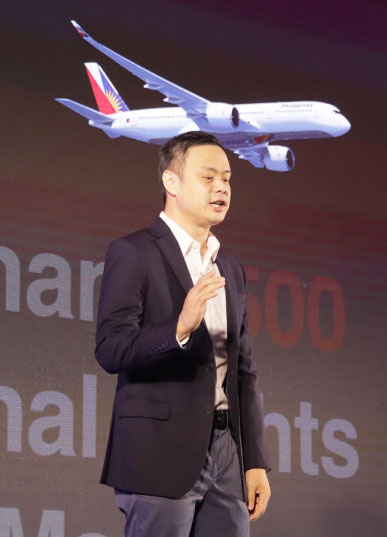
-
Philippine Airlines will continue to develop all-cargo markets and operate more hybrid flights as it shifts from reliance on passenger traffic as only revenue source
-
The airline is set to integrate its cargo reservation system with a new mobile cargo app and website
-
PAL will soon offer last-mile cargo deliveries directly to homes and offices in the Philippines
-
2021 cargo revenue was the highest ever at above $300 million
Philippine Airlines will continue to develop its cargo business as it offers more hybrid flights and last-mile cargo deliveries this year.
“PAL is now a cargo airline in our own right,” PAL president and chief operating officer Stanley Ng said in a speech during the airline’s recent 81st anniversary celebration.
He said the carrier will continue to develop all-cargo markets to end its dependence on passenger traffic as a single revenue source.
The airline will operate more hybrid flights – carrying only cargo in one direction and passengers in the other direction using the same aircraft, Ng said.
Further, PAL will innovate by integrating its cargo reservation system with a new mobile cargo app and website, as well as create more cashless payment options.
Ng said the carrier would also soon offer last-mile cargo deliveries directly to homes and offices in the Philippines.
PAL director Lucio Tan III, in a separate speech during the ceremony, said PAL pivoted to become a cargo-driven airline during the pandemic, converting passenger aircraft to virtual freighters without taking out seats to fly all-cargo services to prime markets.
Operating with 100 aircraft in 2018, Tan noted PAL recorded cargo revenues of $193 million. In 2021, with fewer than 50 aircraft in actual service, the airline reached its highest cargo revenue in history, which Tan expects to surpass $300 million.
“Through the crucible of the crisis, Philippine Airlines discovered a new capacity to remake ourselves on the fly,” Tan he said.
Moving forward, Tan said PAL “will adopt a youthful outlook and will no longer be tied to the old traditional airline models that ran on legacy systems and comfortable notions of the past.”
“We envision PAL as a tech company, using technology to deliver smarter and simpler products that customers will love,” Tan added.
The airline completed recently its Chapter 11 restructuring, allowing for a US$505 million fresh capital, reduced debt, and a streamlined fleet.
READ: PAL exits Chapter 11 proceedings
For April and beyond, Ng said PAL’s summer schedule will cover 39 international destinations across 20 countries, as well as more than 1,000 destinations through its codeshare alliance and partnerships.
PAL expects domestic flights at its Manila hub to reach pre-pandemic levels from April onwards, with flights to 27 destinations and more than 450 departures forecast for the summer season. PAL will also build its Cebu hub, expanding flights to 13 domestic routes and deploying some flights to Japan.
The airline had earlier announced it would mount more than 1,500 additional flights in March, a 52% increase on its regularly scheduled flights.




